The Milky Way
Attempts to survey
Herschel
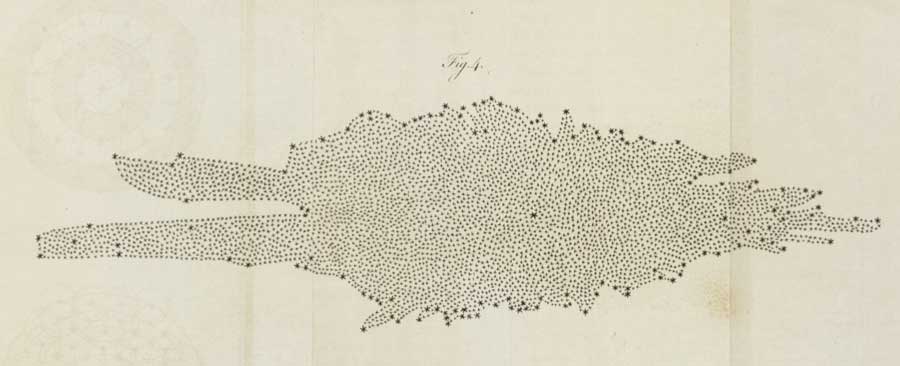
Herschel's 1785 map of the galaxy.
doi: 10.1098/rstl.1785.0012
Phil. Trans. R. Soc. Lond. 1785 vol. 75 213-266

Andromeda as seen in 1902.
The Great Debate
April 26 1920
Harlow Shapley and Heber Curtis
→ How big is the Milky Way (and the universe)
Globular Cluster
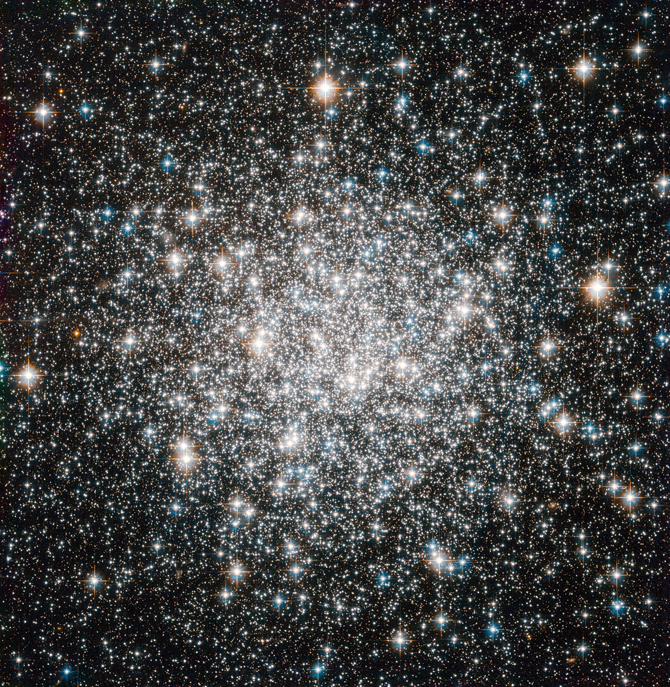
Messier 68, a globular cluster. Might have 106 stars within a small (30 pc) diameter.
Globular Cluster
A dense cluster of old stars.
The stars contained within are gravitationally bound to each other.

HR Diagram for a globular cluster (M-55)
Variable Stars
Cepheids

Brightness of some stars was found to be periodic.
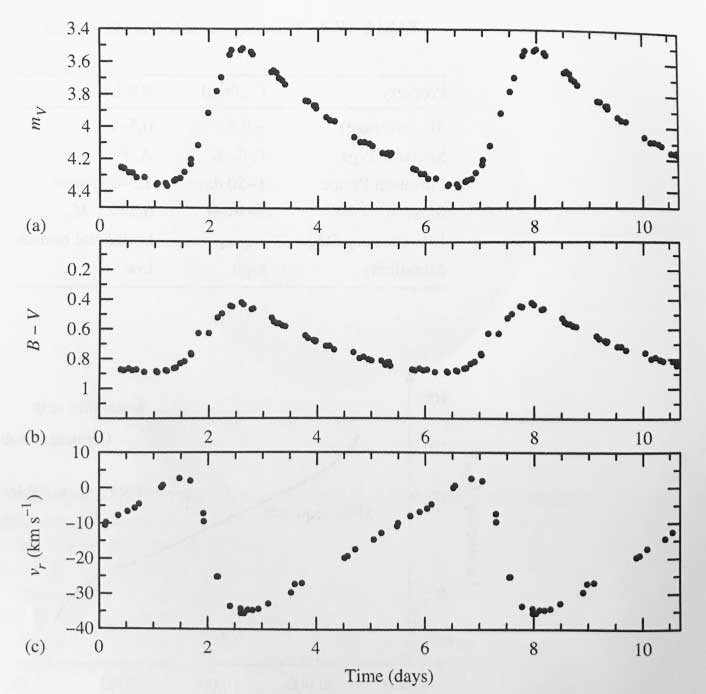
Ryden & Peterson Fig 17.7
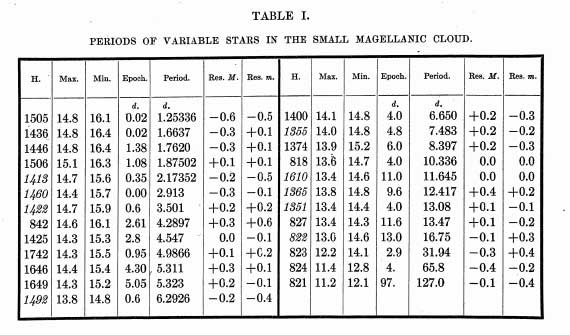
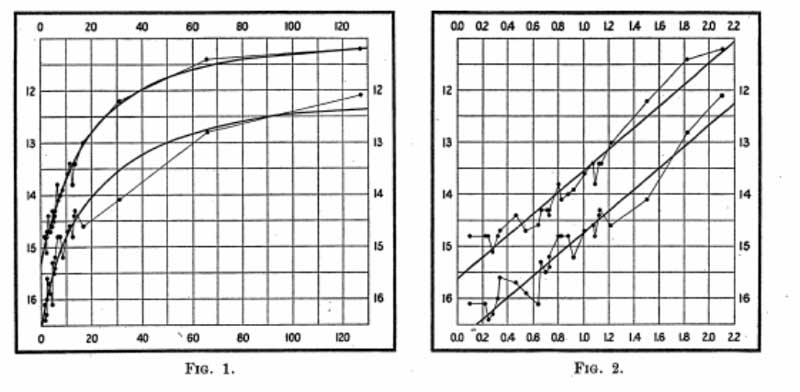
"A straight line can readily be drawn..."
Absolute magnitude is related to period: $$\begin{equation} \bar{M}_v = -2.76 \log \left( \frac{P}{10 \; \textrm{days}}\right)-4.16 \end{equation}$$ where $\bar{M}_V$ is the absolute magnitude in the $V$ band, measured over one complete period.
With this relation, if we know $M$ and $m$, then we can get distance, $d$. $$\begin{equation} M = m - 5 \log\left(\frac{d}{10 \; \textrm{pc}} \right) \end{equation}$$
Artistic Rendering of a Pulsating Star
Shapley's Map

Known Globular Clusters in the Milky Way
Globular Clusters - more near the center.

The known Globular Clusters around our Milky Way

Milky Way Structure

NASA, GSFC, COBE
Thin & Thick disks
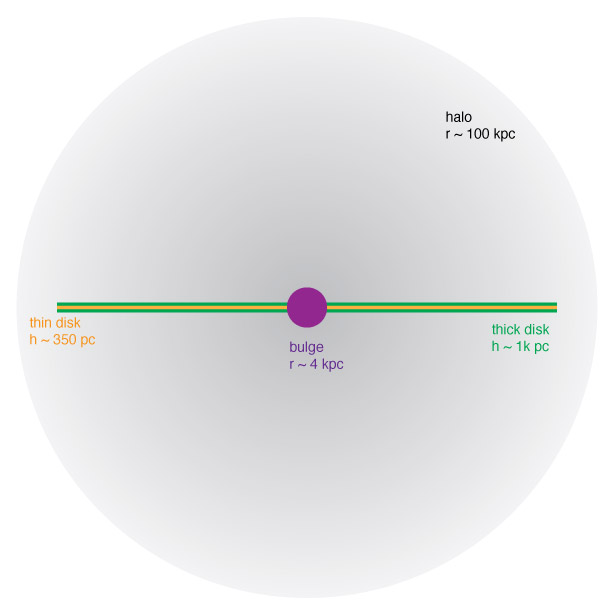
Schematic showing the main features: two disks and two spherical elements: bulge and halo.
Thin disk:
M: 6 × 1010 M☉
form: $e^{-z/h}$
$h \sim 0.350 \; \textrm{kpc}$
[Fe/H]: -0.5 to +0.3
Thick disk:
M: 0.2-0.4 × 1010 M☉
form: $e^{-z/h}$
$h \sim 1 \; \textrm{kpc}$
[Fe/H]: -2.2 to -0.5
Metallicity
The ratio of Fe to H in the spectra of stars can be used to quantify a star.
$$\begin{equation} [\textrm{Fe/H}] \equiv \log_{10} \left[ \frac{(N_{Fe}/N_{H})_{\textrm{star}}}{(N_{Fe}/N_{H})_{\textrm{sun}}} \right] \end{equation}$$
This is called the metallicity. ($N_{Fe}$ and $N_{H}$ are the number of Iron and Hydrogen atoms atoms.) Stars with the same proportion as the sun, will have values of [Fe/H] = 0. More metal rich stars have higher positive values. Less metal rich stars have negative values.
In general, younger stars will have higher metallicity than older stars.
Milky way stats
- 200 Billion Stars
- Type: Barred spiral galaxy
- Diameter: 100–180 kly (31–55 kpc)
- Thickness of thin stellar disk: 2 kly (0.6 kpc)
- Oldest known star ≥ 13.7 Gyr
- Whole thing is moving at 600 km per second w.r.t the extragalactic frame of reference
And our place in it:
- Distance to center: 26.4 ± 1.0 kly (8.09 ± 0.31 kpc)
- Sun's galactic rotation period: 240 Myr
Motion of Stars
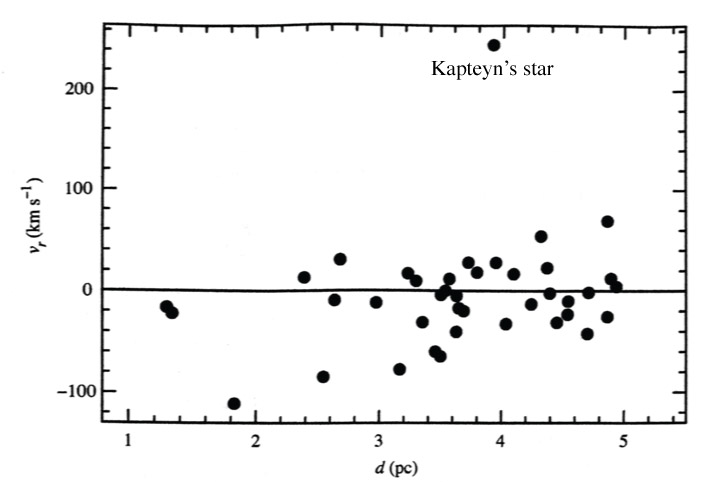
Ryden & Peterson, Fig 19.10
Radial velocity: $v_r$. Measured using doppler shift of the star's absorption lines.
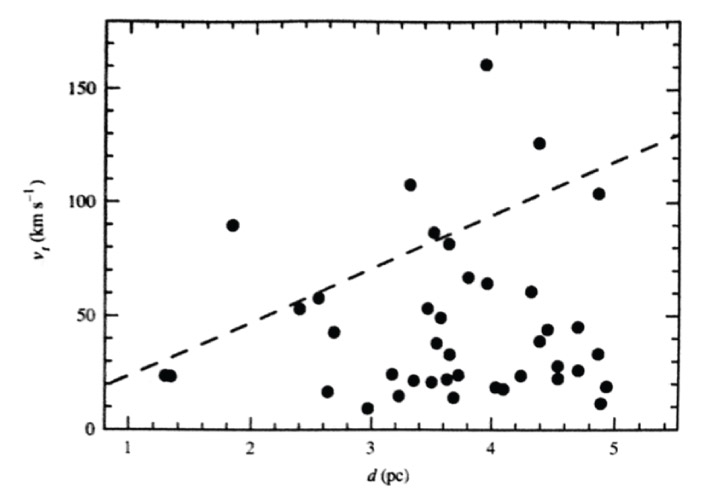
Ryden & Peterson, Fig 19.11
Tangential velocity: $v_t$. Measured using proper motion, $\mu$ and distance $d$. $$\begin{equation} \mu = \frac{v_t}{d} \end{equation}$$ (in the small angle limit)
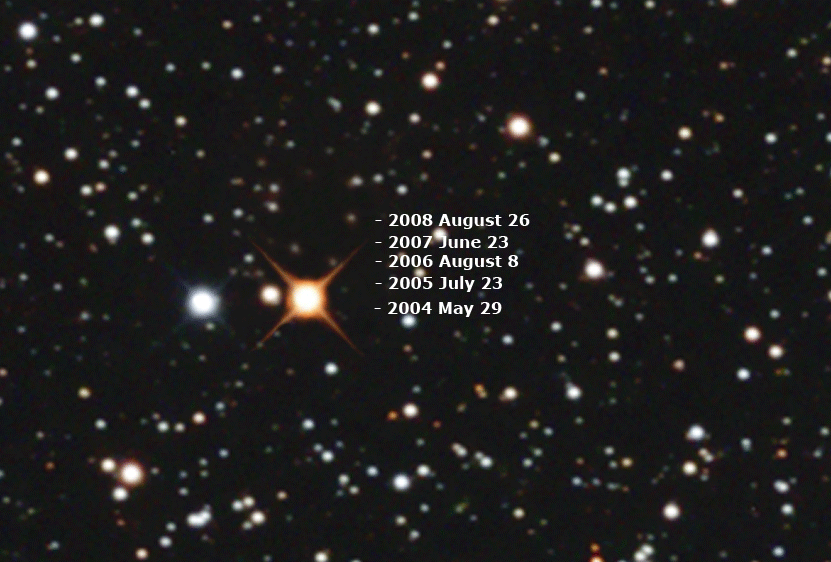
http://www.backyardastronomer.com/ccd/Barnard_Mortfield_Cancelli_crop_labels1.gif
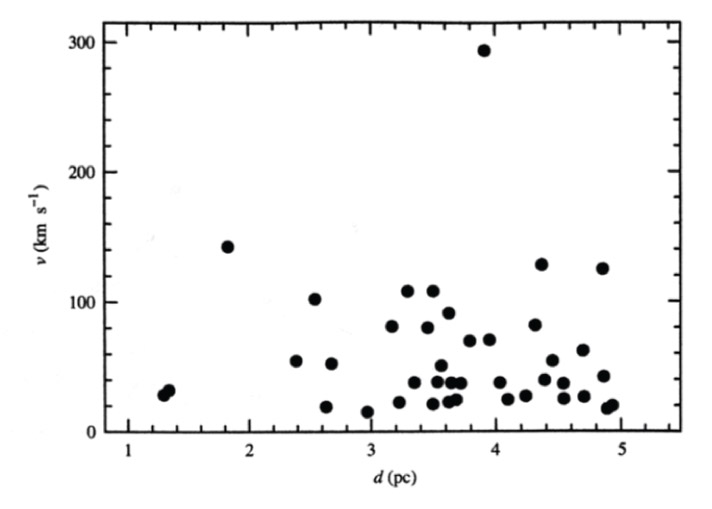
Space motion
Ryden & Peterson, Fig 19.12
Space motion is the resultant of the radial and tangential velocities: $$\begin{equation} v = \sqrt{ v_r^2 + v_t^2} \end{equation}$$
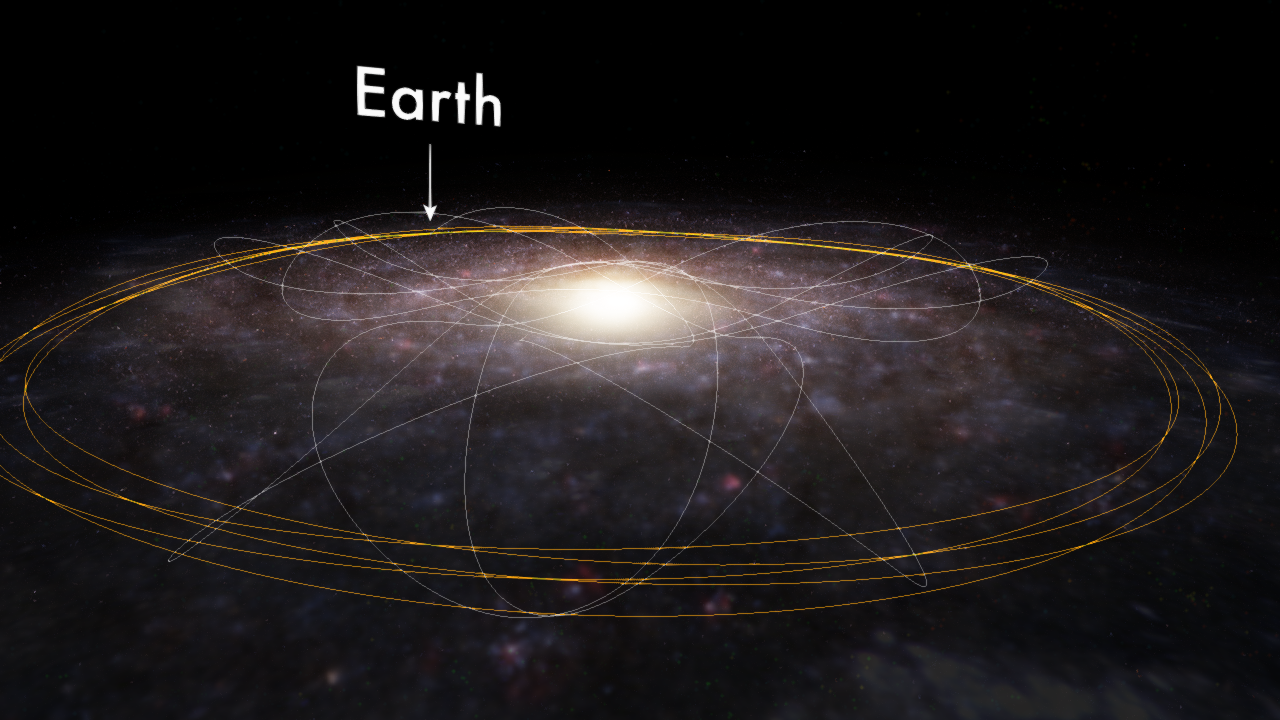
Two stars (sun = orange, Kapteyn's Star = white)
Measuring the rotation curve
Geometry for measuring the R value for a star/cloud.
We would like to know the distance $R$. Let's say we can't measure $d$, but we know $R_0$ and $l$.
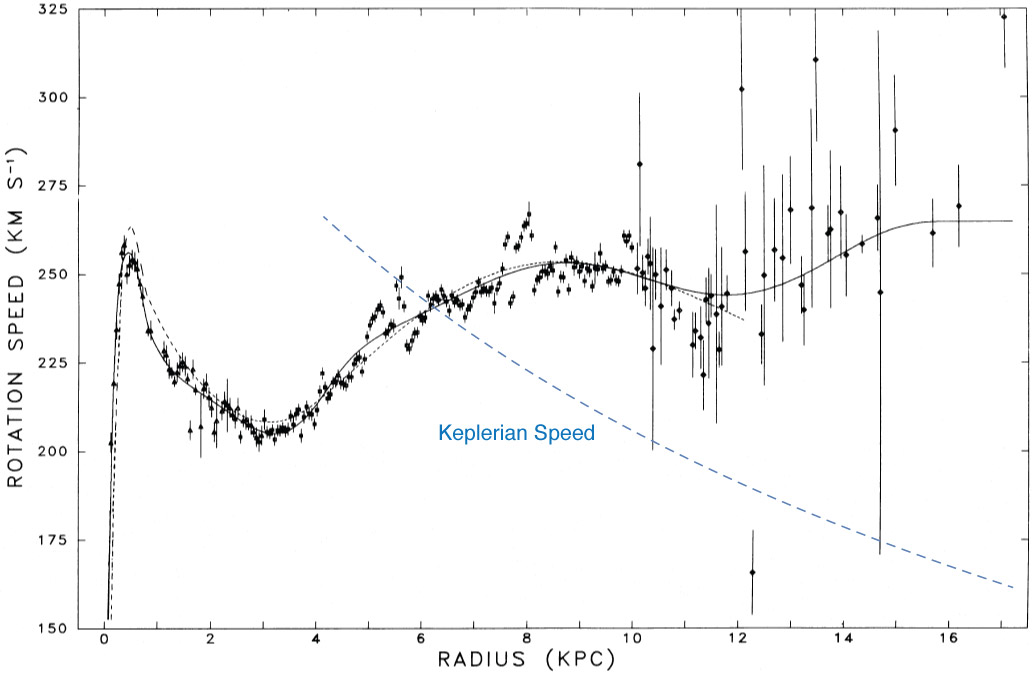
Dark Matter
There's more stuff there that we just can't see, so it's called dark...
Astrophycisists and Cosmology folks are still figuring out what it is.
The leading candidate is WIMPS: Weakly Interacting Massive Particle. These are hypothetical particles that don't follow the same rules as the others in the standard model of particles physics.
The Galactic Center
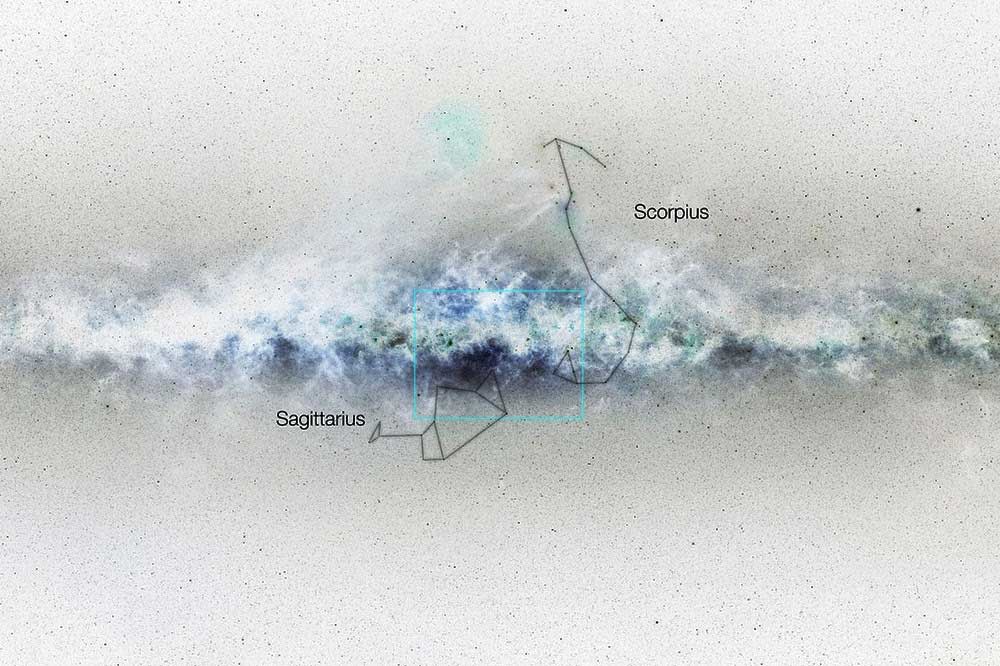
Can't see it too well
If we were closer...
Let's move the solar system to half a parsec away from the galactic center.
- The nearest star would be ~ 1000 AU away
- The night sky would have 106 stars brighter than Sirius
- The total starlight would be ~ 200 times brighter than the moon
- Stars might collide!
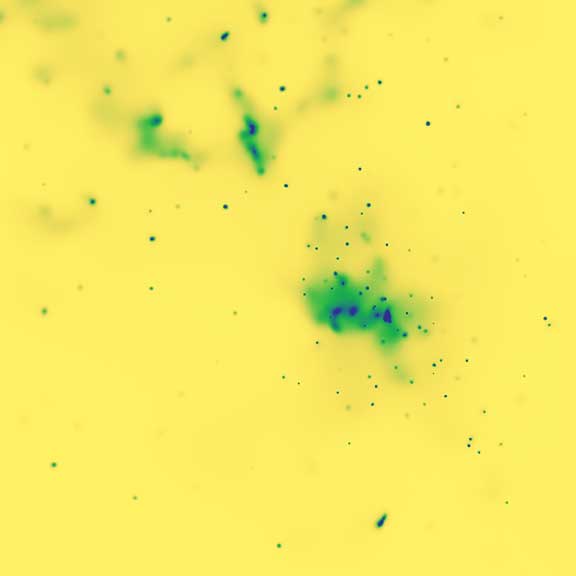
Chandra X-ray Image of Sagittarius A*
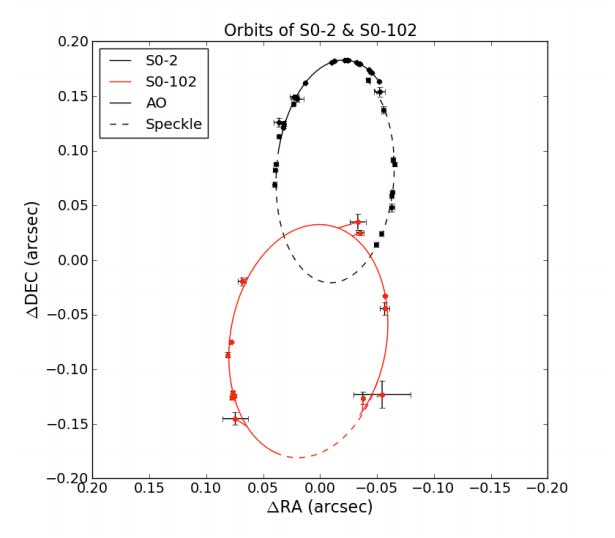
The orbits of S0-2 (black) and S0-102 (red). The data points and the best fits are shown. Both stars orbit clockwise
http://science.sciencemag.org/content/338/6103/84
Based on the orbital parameters, we can get the semi-major axis of S2: $$\begin{equation} a_{S2} = \frac{r_p}{1-e} = 1.4 \times 10^{14} \; \textrm{m} \end{equation}$$ Based on Kepler's Third law, and a period of 15.24 ± 0.36 yr: $$\begin{equation} M = \frac{4 \pi^2 a_{S2}^3}{G P^2} \\ \simeq 7 \times 10^{36} \; \textrm{kg} \\ \simeq 3.5 \times 10^{6} M_{\textrm{Sun}} \end{equation}$$
Center of Milky Way
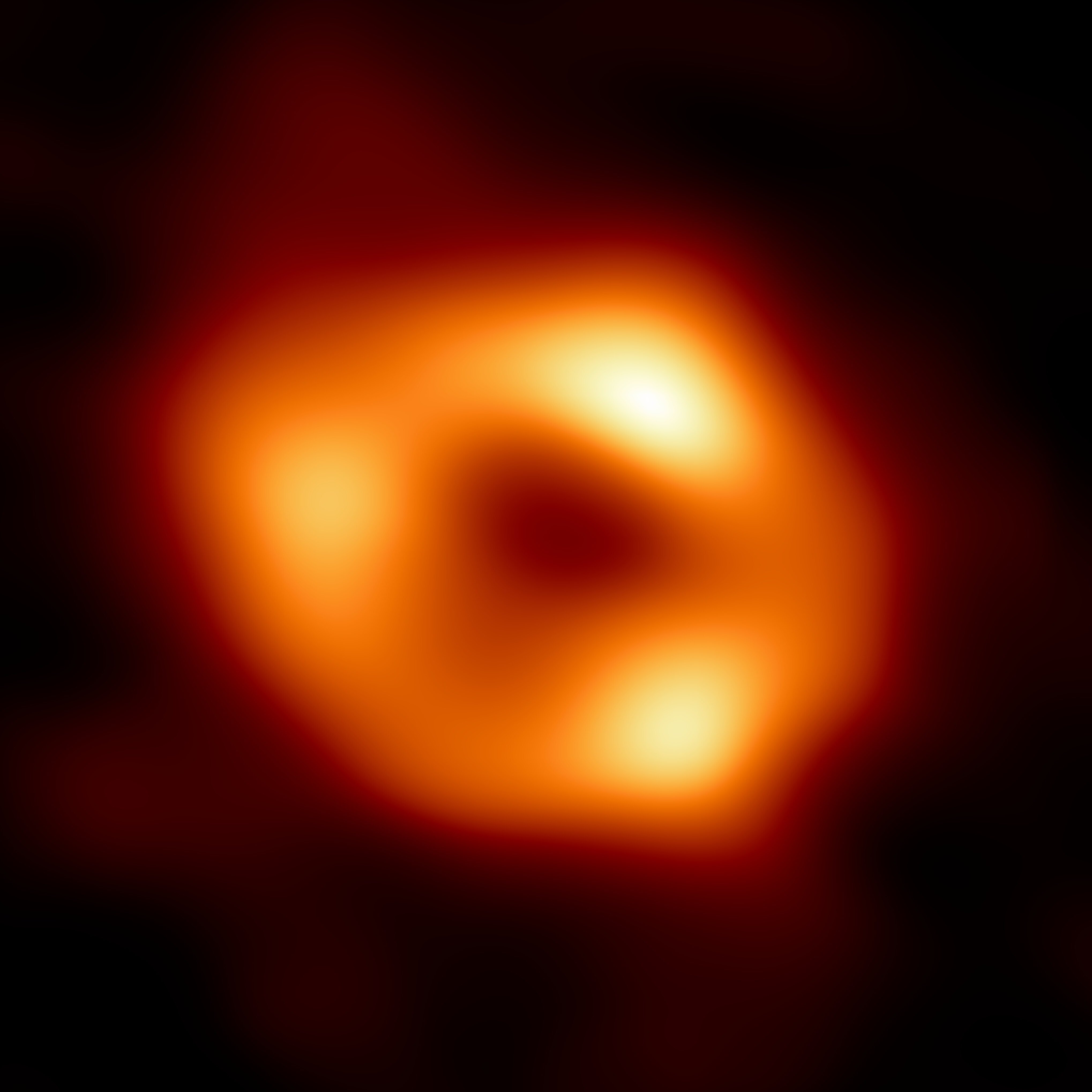
First image of the black hole at the centre of the Milky Way
Credit: EHT Collaboration:
Image of Black Hole at the center of the Milky Way
The Black hole at the center of the Milky Way, as imaged by the Event Horizon Telescope

